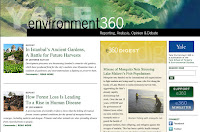Uncertain future for one of world's oldest urban farms
Driving into Istanbul from Atatürk Airport, the crumbling fortifications along the Marmara Sea demarcate where the historic, pre-sprawl city begins. But though they may evoke oohs and ahhs out the window, few visitors venture back to explore the 1,500-year-old city walls on foot.
My first time walking the 6.5-kilometer length of the walls was full of surprises: homing pigeons for sale in a parking lot, spectacular (if precarious) views, a livestock market for Kurban Bayramı (Eid al-Adha) sacrifice animals. Most striking of all were the gardens: lush plots of fruits and vegetables squeezed between the walls and the modern highway that now loops outside it. Years later, urban redevelopment has transformed or rendered inaccessible many areas along the walls, but some of the market gardens (called bostan in Turkish) remain, a last vestige of an ancient urban agricultural tradition.
I've written previously about the Yedikule bostan by the city walls for The Atlantic's City Lab, and about other examples of urban agriculture in Istanbul for Culinary Backstreets and Zester Daily. A new threat to the Yedikule bostan early this year prompted me to take a deeper look at the gardens' past, present, and future.
My first time walking the 6.5-kilometer length of the walls was full of surprises: homing pigeons for sale in a parking lot, spectacular (if precarious) views, a livestock market for Kurban Bayramı (Eid al-Adha) sacrifice animals. Most striking of all were the gardens: lush plots of fruits and vegetables squeezed between the walls and the modern highway that now loops outside it. Years later, urban redevelopment has transformed or rendered inaccessible many areas along the walls, but some of the market gardens (called bostan in Turkish) remain, a last vestige of an ancient urban agricultural tradition.
I've written previously about the Yedikule bostan by the city walls for The Atlantic's City Lab, and about other examples of urban agriculture in Istanbul for Culinary Backstreets and Zester Daily. A new threat to the Yedikule bostan early this year prompted me to take a deeper look at the gardens' past, present, and future.
Read my new article, "In Istanbul's Ancient Gardens, A Battle for Future Harvests," in Yale Environment 360
